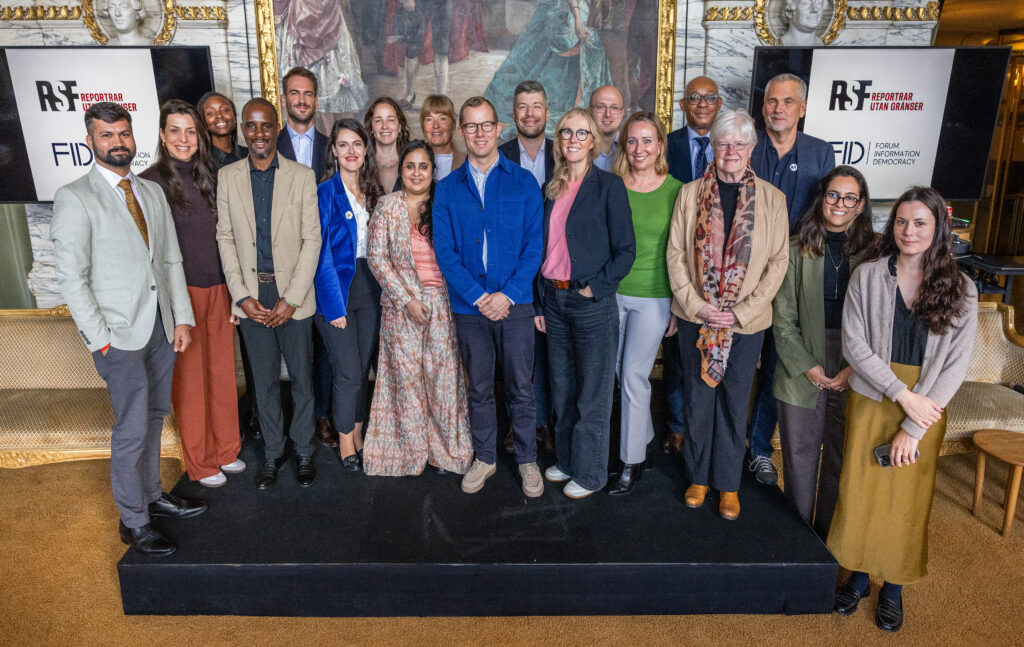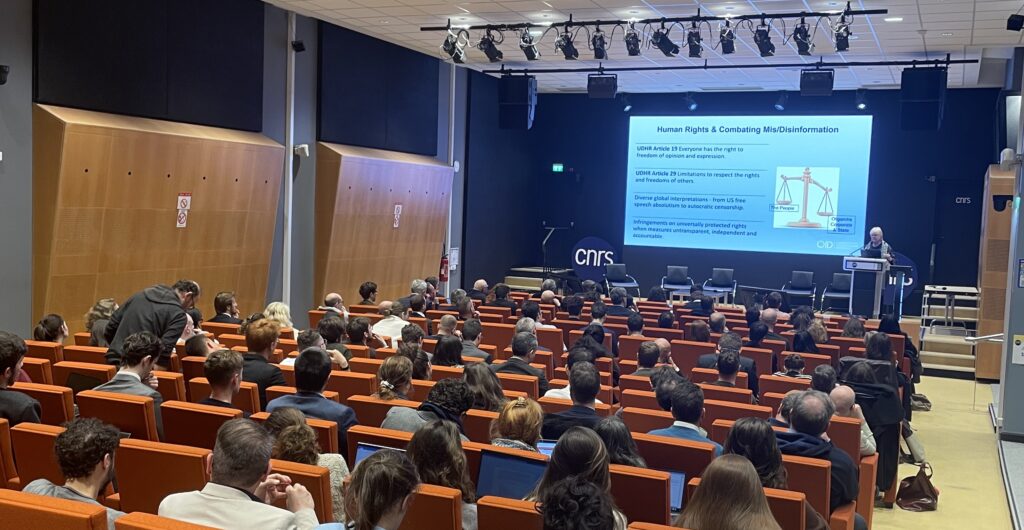On February 20, 2025, the National University of Political Studies and Public Administration (SNSPA) in Bucharest hosted the third dissemination event of the Observatory on Information and Democracy’s (OID) first report. Launched in January 2025, the document synthesises insights from over 1,600 academic publications and research studies. It aims to provide a comprehensive understanding of global information ecosystems, examining their role in public discourse, democratic integrity, media freedoms, and institutional resilience.
This event at SNSPA was part of a global series designed to disseminate key findings, foster academic and interdisciplinary dialogue, and encourage collaborative research on these pressing issues.
Key Moments from the Event
Opening Remarks and Keynote Address
The event began with a welcome address from Professor Alina Bârgăoanu, Dean of the College of Communication and Public Relations at SNSPA and an advisory board member of the European Digital Media Observatory (EDMO). She emphasized the urgent need for a collective response to disinformation and its impact on democratic stability, particularly in Central and Eastern Europe.
This was followed by a keynote speech from Associate Professor Romina Surugiu, Dean of the Faculty of Journalism and Communication Sciences at the University of Bucharest, who highlighted the increasing challenges posed by digital platforms, artificial intelligence, and misinformation in shaping democratic debate. Surugiu underscored the evolving nature of media consumption and the role of independent journalism in countering misinformation.
Presentation of the OID Report
A detailed presentation of the OID’s research was led by:
- Emma Gruden, Policy Officer at the Forum on Information and Democracy, Paris
- Professor Emerita Robin Mansell, Scientific Director of the OID report, London School of Economics
- Associate Professor Flavia Durach, Rapporteur of the OID report and Head of the Department of Digital Communication and Emerging Media at SNSPA
Their discussion centered on the role of AI, media trust, and policy responses to misinformation. Mansell provided a critical analysis of how algorithmic curation affects public discourse, while Durach elaborated on the disparities in how different regions approach media regulation. They also highlighted regional disparities in media regulation and the urgent need for a global governance framework for information integrity.
Discussion Panel: Priorities for Future Research
The event concluded with a dynamic panel discussion featuring:
- Eliza Vaș, Coordinator, Studies Unit, European Institute of Romania
- Daniela Munteanu, Societal Resilience Expert, Euro-Atlantic Resilience Centre, Bucharest
- Mădălina Boțan, Associate Professor, SNSPA
Moderated by Flavia Durach, the panel delved into key issues of media resilience and governance approaches, highlighting specifically the Romanian context. On addressing most urgent vulnerabilities when it comes to the media, panelists emphasized the urgent need for administrations to engage with citizens beyond just electoral segments, fostering genuine curiosity and research about public sentiment towards governments.
The discussion highlighted that good governance can cultivate respect and trust between citizens and institutions, particularly in a climate where many feel abandoned and unheard except during campaign periods. Boțan also noted that while disinformation exacerbates existing distrust, it can also create vulnerable opinions and facilitate foreign interference – as seen with the recent 2024 presidential election annulment in Romania due to election manipulation.
On how the information space should be regulated, it was emphasised that regulation without proper political support is useless, even if a common ground is found on how things should be regulated. Panelists also agreed on the need for a combination of top down and bottom up approaches.
The panel discussion further highlighted significant research gaps, especially in understanding the public, their reactions, and information consumption patterns – also often tied with painful historical contexts as in Romania. As pointed out by Daniela Munteanu, Euro-Atlantic Resilience Centre, Bucharest and PhD candidate “People don’t have the custom of looking at the information as a product delivered to them, where it comes from and the intent behind. We need to shift our mindset on information.”
Mansell concluded by stressing the need to focus on communication processes and human interactions rather than solely on information itself to better address these challenges.
Moving Forward
As part of the ongoing global launch of the OID report, SNSPA’s event reinforced the importance of interdisciplinary research and international collaboration in addressing the evolving challenges of information ecosystems. The discussions held at SNSPA will contribute to shaping future studies and policy recommendations, ensuring that scholars, policymakers, and civil society actors work together to strengthen democratic resilience in the digital age.






